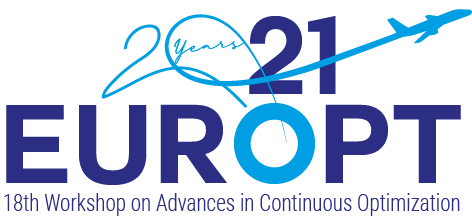TB-01: Optimization for Air Transportation
Stream: Optimization for Air Transportation
Room: Fermat
Chair(s): Andrija VIDOSAVLJEVIC
Optimization for safe urban air mobility
Mercedes Pelegrín, Claudia D’Ambrosio, Rémi Delmas, Youssef Hamadi
Urban Air Mobility (UAM) will exploit the third dimension to smooth ground traffic in densely populated areas. On-line automated air traffic management will be key to ensure safety and optimize airspace capacity. This work addresses the problem of Tactical Deconfliction in UAM, considering different sources of unexpected traffic disruptions. A mathematical programming model based on envisioned UAM corridors is proposed. Extensive computational experience will allow us to draw conclusions on the benefits and limitations of our approach.
Trajectory optimization for the computation of safe emergency trajectories
Maëva ONGALE-OBEYI, Damien Goubinat, Pierre-loic Garoche, daniel delahaye
Nowadays, during an unexpected event in flight, the crew has to compare all the alternatives and plan a trajectory, without any automatized decision support. This decision has to be executed quickly in a stressful environment. Thus, the creation of an emergency landing planner seems crucial. We want to create a planner capable of computing a trajectory that is : (a) safe, (b) flyable and (c) in accordance with the resources. For this purpose, we decided to combine three algorithms, providing each one of these features: a path-planner, a path smoothing system and a continuous trajectory system.
New formulation for aircraft conflict avoidance problem using Sequential convex MINLP technique
Renan Spencer Trindade, Claudia D’Ambrosio, Antonio Frangioni, Claudio Gentile
Our work presents a new formulation for the aircraft conflict avoidance problem in two-dimensional space, where only the change in flight direction angle is allowed. The goal is to find the minimal variation of the original aircraft route angle while respecting the aircraft’s minimum safety distance along the trip. We propose a formulation defined as the sum of non-convex univariate functions of the original problem. Sequential Convex Mixed Integer Non-Linear Programming is applied to the problem, defining a convex relaxation of the original problem.
Two-stage stochastic programming for the extended aircraft arrival management problem with multiple pre-scheduling points
Ahmed Khassiba, Fabian Bastin, Sonia Cafieri, Bernard Gendron, Marcel Mongeau
We consider the two-stage stochastic optimization problem where a set of aircraft, heading to a given airport, are to be pre-scheduled on a reference point in the near-to-airport area in the first stage, and to be scheduled on the landing runway in the second stage. Actual arrival times on the pre-scheduling point are assumed to deviate randomly from target arrival times. In this work, we extend a previously proposed model to the case of multiple pre-scheduling points. Preliminary results are obtained on realistic instances from Paris-Charles-de-Gaulle airport.
